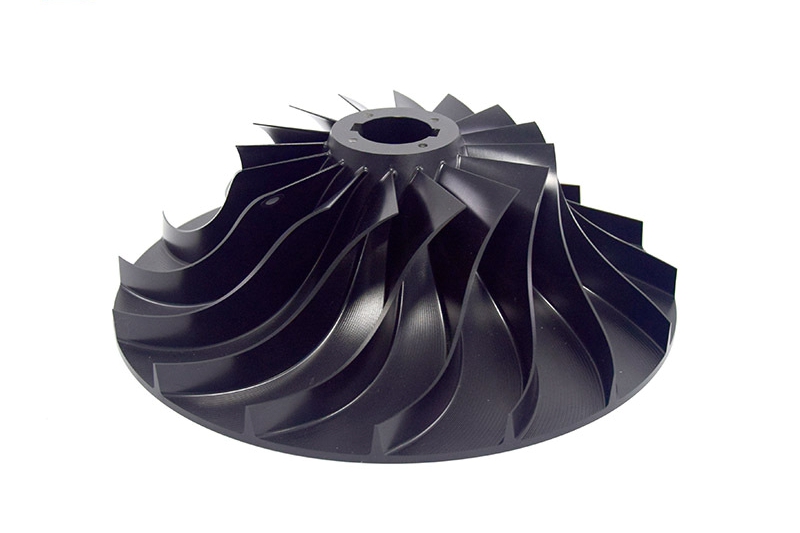Precision in Flight: How CNC Machined Parts Elevate Aerospace Engineering
Introduction
CNC machining has revolutionized the aerospace industry by enabling the production of high-precision components critical to flight safety and performance. This technology allows engineers to create complex geometries and intricate designs that meet the rigorous demands of aerospace engineering.
The accuracy and repeatability of CNC machining manufacturing ensure that parts are produced with the utmost precision, whether for aircraft engines, structural components, or other high-performance systems. As the aerospace industry evolves, CNC machining continues to push the boundaries of innovation and efficiency.
CNC Machining Steps
Design & Engineering: Develop precise CAD models for accurate machining.
Material Selection: Choose optimal materials based on application requirements.
Machining Process: Perform precision machining using multi-axis CNC machines.
Inspection & Testing: Validate components through rigorous quality inspections.
Materials: Material Solutions for Aerospace
Choosing the right material is crucial in aerospace machining to ensure strength, weight, and durability. Here are common aerospace materials, their properties, and their advantages:
Material | Properties | Advantages | Applications |
|---|---|---|---|
Tensile Strength: 1,000-2,000 MPa Yield Strength: 700-1,500 MPa Operating Temp.: 1,000°C - 1,100°C Density: 8.5 - 9.0 g/cm³ | Exceptional heat resistance and mechanical strength at elevated temperatures, superior oxidation resistance. | Turbine engines and exhaust systems due to high-temperature stability. | |
Tensile Strength: 900-1,200 MPa Yield Strength: 800-1,000 MPa Density: 4.43 g/cm³ Excellent corrosion resistance in seawater | Superior strength-to-weight ratio, exceptional corrosion resistance, lightweight yet strong. | Airframe structures, engine parts, fasteners. | |
Tensile Strength: 500-1,500 MPa Yield Strength: 250-1,200 MPa Hardness: 150-350 HB Excellent corrosion resistance | Durable, resistant to stress and corrosion, maintains structural integrity. | Engine components, structural parts exposed to moisture. | |
Tensile Strength: 200-700 MPa Yield Strength: 150-500 MPa Density: 2.7 g/cm³ Fatigue Strength: 150-300 MPa | Lightweight, highly machinable, cost-effective, excellent strength-to-weight efficiency. | Aircraft fuselages, wing components. |
Surface Treatment: Enhancing Aerospace Part Durability
Anodizing
Functions: Anodizing enhances aluminum components' corrosion and wear resistance by creating a protective oxide layer.
Key Features: Surface hardness up to 400 HV, non-conductive porous surface layer.
Applications and Scenarios: Aircraft fuselages, wing components, and landing gear in harsh environments.
Electropolishing
Functions: Electropolishing improves surface smoothness by removing imperfections and burrs.
Key Features: Achieves surface roughness down to 0.1 µm and enhances corrosion resistance.
Applications and Scenarios: Turbine blades, engine components, critical fasteners.
Thermal Barrier Coatings (TBC)
Functions: Thermal Barrier Coatings protect components from extreme heat and oxidation.
Key Features: Withstands temperatures up to 1,300°C; significantly reduces heat transfer.
Applications and Scenarios: Jet engine turbine blades, exhaust systems.
Passivation
Functions: Passivation chemically enhances the corrosion resistance of stainless steel by creating a protective oxide layer.
Key Features: High resistance to acidic, alkaline, and saline environments.
Applications and Scenarios: Aircraft engine parts and structural components exposed to corrosive conditions.
CNC Machining Process Comparison
Each CNC machining process has specific strengths and optimal usage scenarios:
Process | Key Features | Application Scenarios |
|---|---|---|
Precision: ±0.0025 mm Cutting Speed: 30-150 m/min (Aluminum), ~50 m/min (Superalloys) Tooling: End mills, ball mills, face mills | Ideal for complex parts with intricate geometries or precise contours. | |
Precision: ±0.0025 mm Cutting Speed: 50-200 m/min Tooling: Carbide-tipped inserts for cylindrical components | Best suited for cylindrical or rotationally symmetrical parts. | |
Precision: ±0.0025 mm hole accuracy Cutting Speed: 30-100 m/min Capability: Deep-hole drilling up to 30× diameter | Necessary for precise, deep, or multiple-hole components. | |
Precision: Surface roughness as low as 0.1 µm Grinding Speed: 10-30 m/s Tooling: High-precision grinding wheels | Essential for ultra-smooth surfaces and precise tolerances. | |
Precision: ±0.0025 mm for complex geometries Cutting Speed: 30-100 m/min Flexibility: Multi-directional cutting | Required for highly complex parts needing simultaneous multi-axis machining. |
Considerations in Production
Material Warping: Implement temperature control and select stable materials.
Tolerance Issues: Regular CNC calibration ensures precision.
Tool Wear and Failure: Regular tooling inspection, use durable cutting tools.
Surface Defects: Post-process treatments like polishing and electropolishing.
Industry and Applications
CNC machining is essential in various industries, particularly aerospace:
Aerospace and Aviation: Engine components, structural frames, flight control systems.
Power Generation: Turbine and compressor components.
Medical Devices: Aerospace-inspired precision medical components.
Automotive: Lightweight, high-performance automotive parts.
Robotics: Precision-engineered robotic systems.
FAQs
What materials are commonly used in CNC machining for aerospace applications?
How does CNC machining ensure precision in aerospace components?
What are the key surface treatments for aerospace parts?
What challenges are faced in CNC machining for aerospace, and how are they solved?
How does multi-axis machining benefit aerospace engineering?

